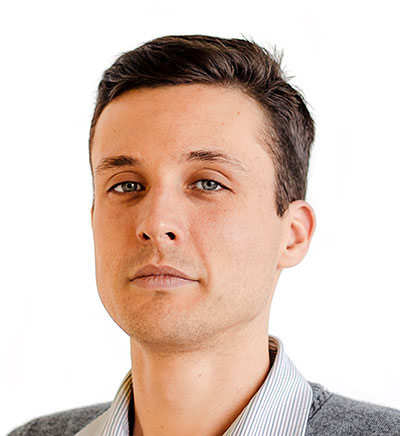Proactive Communication Creates Social Assets

STORY INLINE POST
Q: What are the main trends shaping social engagement practices in the mining industry today?
A: I think there are four things shaping community engagement practices. The first is the role communities are playing now that they have access to more sources of information; the second is communities’ own awareness that they are key stakeholders in these project developments; the third is the pandemic, which poses a number of challenges at the social interaction level. Finally, the level of commitment that financial institutions, shareholders and the C-Suite have in community related issues.
As for the first of these, communities today have access to varying amounts and quality of information from different sources, unfortunately many of these are inaccurate or misleading, and may wrongly influence their perception of projects. The mining industry must be able to provide simple, clear, accurate and understandable information to key stakeholders.
The second aspect has to do with democratization of communities. Nowadays, in most of the communities, leaders need the approval and backing of their people. Project decisions may be negotiated by a few but should be approved by many. This is something to bear in mind when defining strategies, in order to build truly inclusive community relations. This trend may be controversial given the traditional way mining companies have handled community relations in the past, but they must adapt if they’re going to succeed today.
With these trends in mind, it is obvious that the mining industry should bet on more, better and clear information related to their projects, and identify the quickest and best channels for keeping the community informed about them. The earlier we can engage the community with accurate information, the sooner we can identify social risks and prevent or mitigate them.
Finally the ongoing impact of the pandemic on the mining industry remains uncertain; but we are learning more each day about how this situation is affecting communities’ behavior and their relationship with different mining models. COVID-19 is forcing us to find new ways to work and communicate with communities.
Mining companies enduring the first wave of COVID-19’s effects on their operating models need to think about responding to social needs through an approach that links social benefits with health care. A strategy for preventing the spread of the virus is key not only to ongoing operations, but to addressing social responsibility within the community. Now more than ever, mining contractors must follow strict protocols. While we are certain that mining companies have strong policies and systems in place, we must be aware that contractors play a huge role in these projects and may are not necessarily be aligned with these same standards. Companies should take this issue very seriously.
Q: Are there any looming changes in Mexico’s legal framework that mining companies should take into account?
A: There are topics concerning the Mining Law that must eventually be discussed. The Supreme Court of Justice and Congress have been discussing several projects in relation with the Mexican Indigenous Law which will need to be addressed in the near future. The outcome of this law will have a major effect in the mining industry, therefore an active participation is crucial in order to have an outcome that is not harmful to the companies’ operation. The real question for the industry, however, is at what stage in the development of a project is a social study or consultation process is required. After all, most mining exploration projects don’t end up as mines. This means that social assessments are a key factor to find out their feasibility.
I think that the current social climate in Mexico necessitates an in-depth discussion about possible changes in the Mining Law, and it will most likely have to be amended and updated to comply with international best practices.
Other crucial area of discussion is land ownership. At the beginning of the 20th century, the Mexican Revolution gave rise to a particular system of agrarian landholding called ejidos, or community-owned property. This is just one of the specificities that require that international treaties be adapted to Mexico’s legal framework, which is unique in this continent.
Q: What are the main guidelines for creating a social engagement strategy in Mexico?
A: First and foremost, project developers need to be transparent regarding the agreements that support the project. A mine ha to go through many stages before it becomes commercially productive. Most often, different owners handle each stage. The problems arise when different owners make different promises to the community, which can slowly turn into social liabilities. Each company in each of these stages must be clear and transparent.
To minimize social liabilities as the project progresses, there must be a comprehensive social due diligence process every time the project changes hands. Agreements with the community should clearly identify needs, interests and propositions. Interests mean what the community wants, propositions mean what they say they want, and a sustainable solution is what they need. As an example: all communities want an ambulance, but what they actually need is healthcare. The job of a social consultant is to enter into dialogue, identify the need and provide proper solutions for addressing it. An ambulance in a 300-person community would do no good, so a partnership with social healthcare system or an NGO would be a more suitable solution.
Furthermore, agreements need to be public: the community must participate in them, and their implementation must be transparent. If those requisites are met, the communities will stand behind the the projects. Finally, commitments must be implemented as simply as possible. Complex implementation creates problems, so this process must be simple, easy to monitor and undertaken in a timely manner.
Q: What is the best way to communicate social initiatives?
A: The main point is to be frank. Say things as they are. If there are impacts, they must be communicated. For instance, one Guerrero mining company bulldozed half a mountain. A lot of soil ended up in the river, and fishermen were definitely affected. Our advice to the mining company was to be proactive and reach out to the fishermen to find a solution. Proactive communication builds; reactive communication simply justifies. We presented a plan to the affected parties. Also, communication must be culturally appropriate. You cannot speak in technical jargon with someone who is not a technician. You need to make yourself clear. The three main topics that affect communities are water, transportation and pollution. You must be keenly aware of the impact that you can generate on each of these fronts. Then, you must proactively communicate.
To widen the communication circle beyond the communities, we have to clearly define our audiences, because speaking with a shareholder is not the same as speaking with a stakeholder. We need to be aware which information is relevant to which group. For instance, politicians are a target group and mining firms should be aware that they are interested in their voters. They will be happy if they know that their constituency is prosperous, because that will translate into votes. Different groups call for different communication strategies. However, they all share the same fundamentals: understanding the impact and benefits of the project, and how agreements will be built.
|
AOSocial (AOS) is a multidisciplinary company that designs and develops social-engagement solutions for energy, mining and infrastructure projects with a strong ESG focus. |








 By Alejandro Ehrenberg | Journalist and Industry Analyst -
Wed, 09/30/2020 - 08:41
By Alejandro Ehrenberg | Journalist and Industry Analyst -
Wed, 09/30/2020 - 08:41










